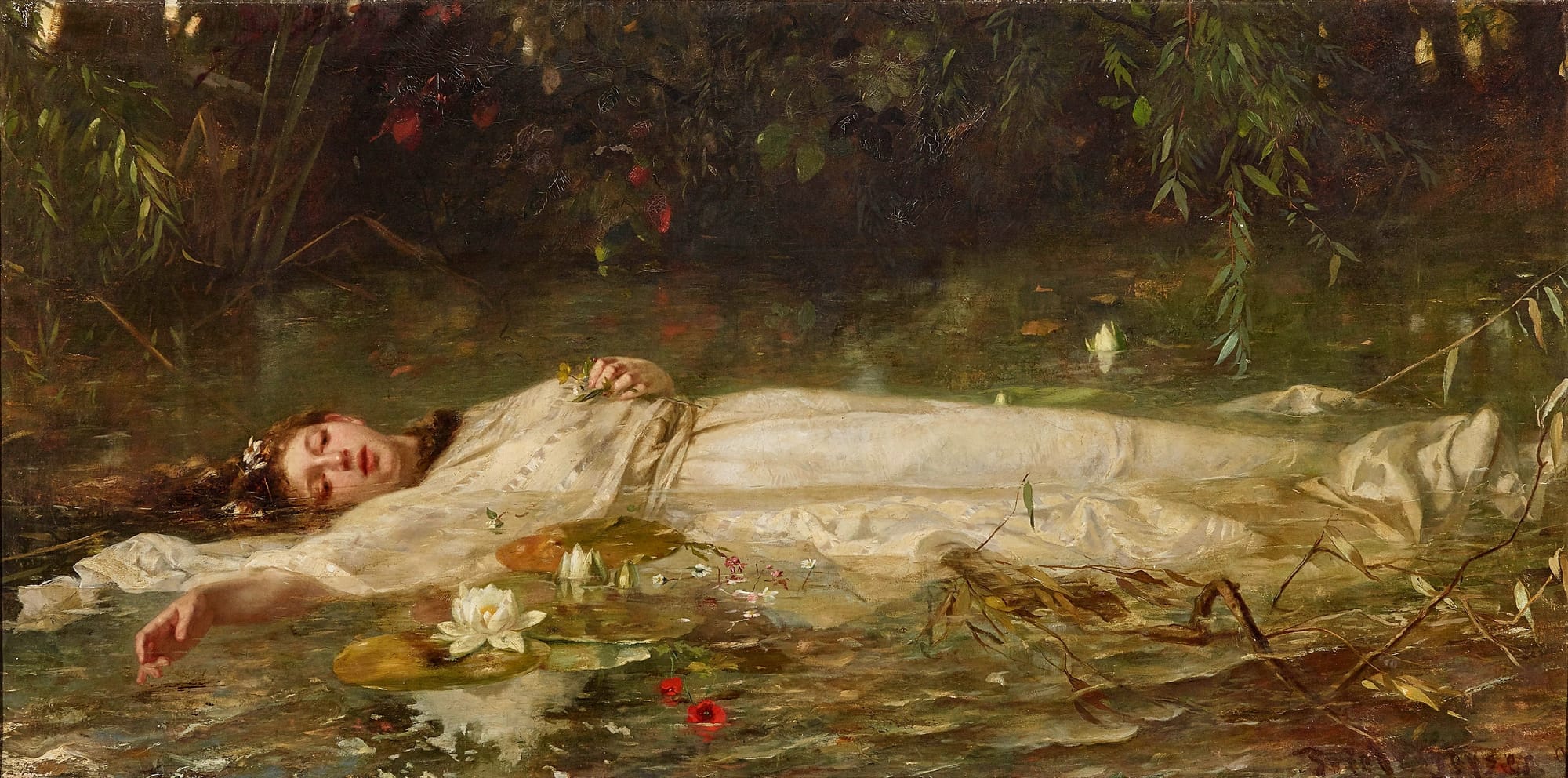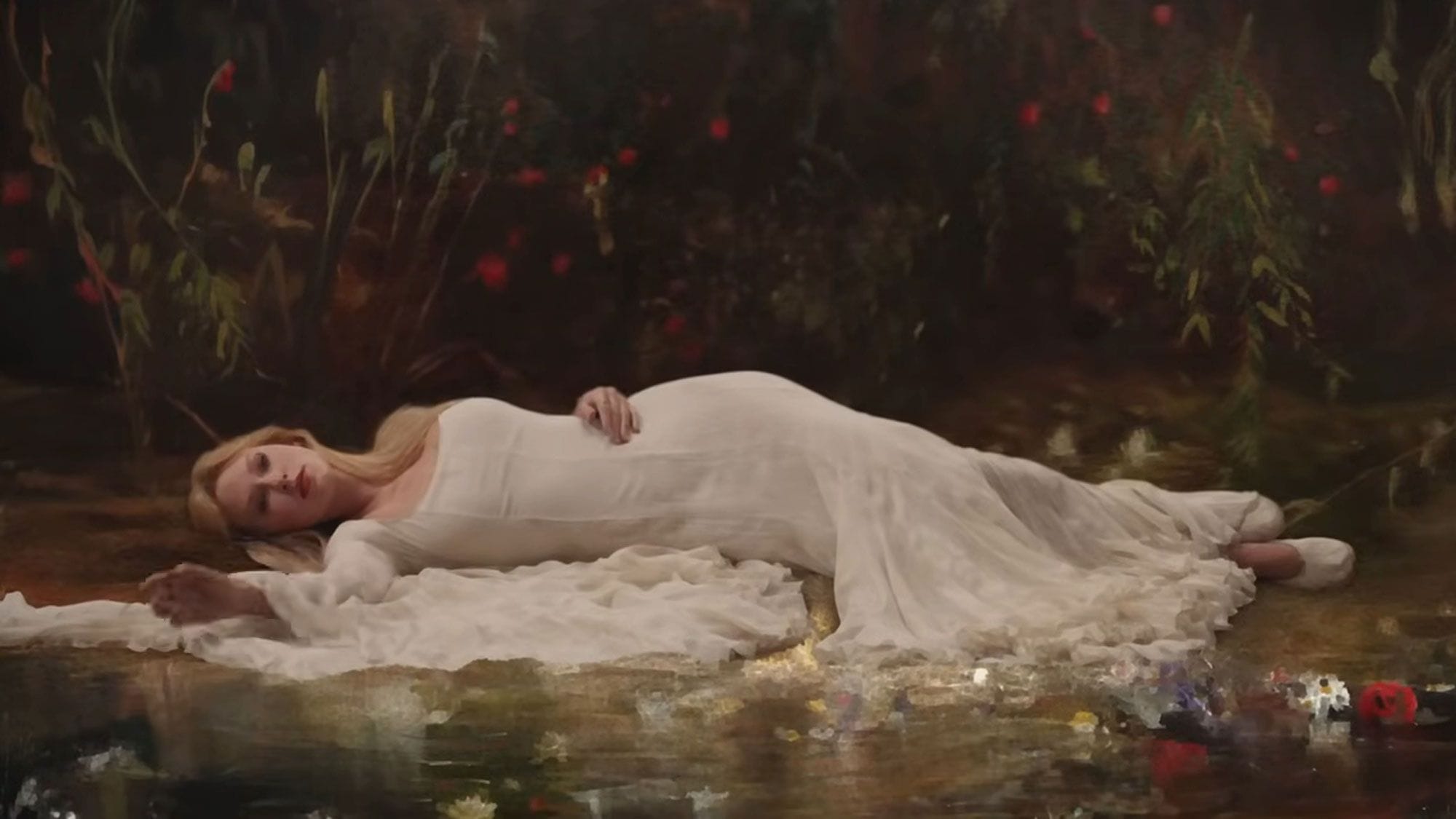Ophelia
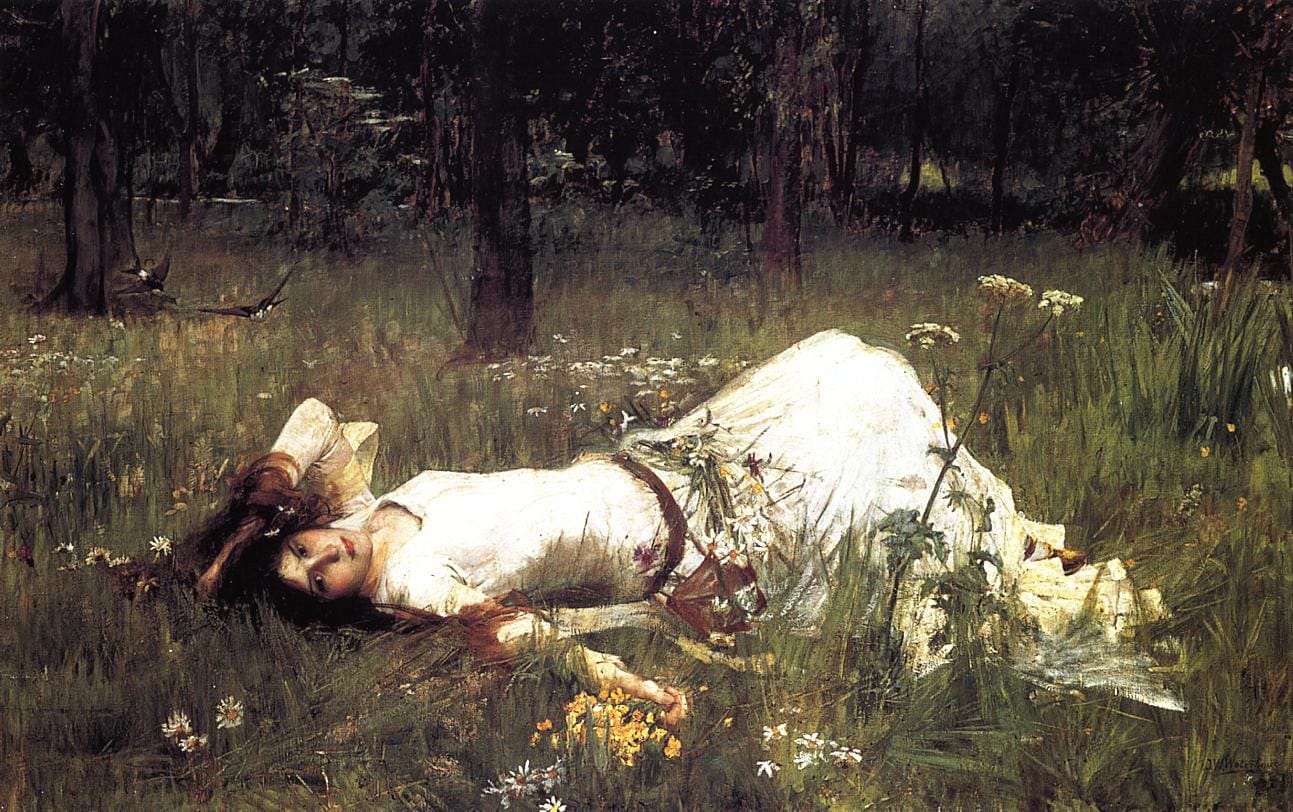
Shakespeare's Ophelia, the poster girl for doomed women, has inspired endless speculation as to whether or not she died by suicide, when she "fell in the weeping brook" and was drowned. I'm with the gravediggers on this one.
Shelley's wife, Harriet, chose to drown herself in the Serpentine, following the path set by Ophelia. It would be the path taken by Virginia Woolf in 1941 and, although it was likely not a suicide, Natalie Wood, who appeared in the 1961 film Splendor in the Grass, was drowned in 1981.
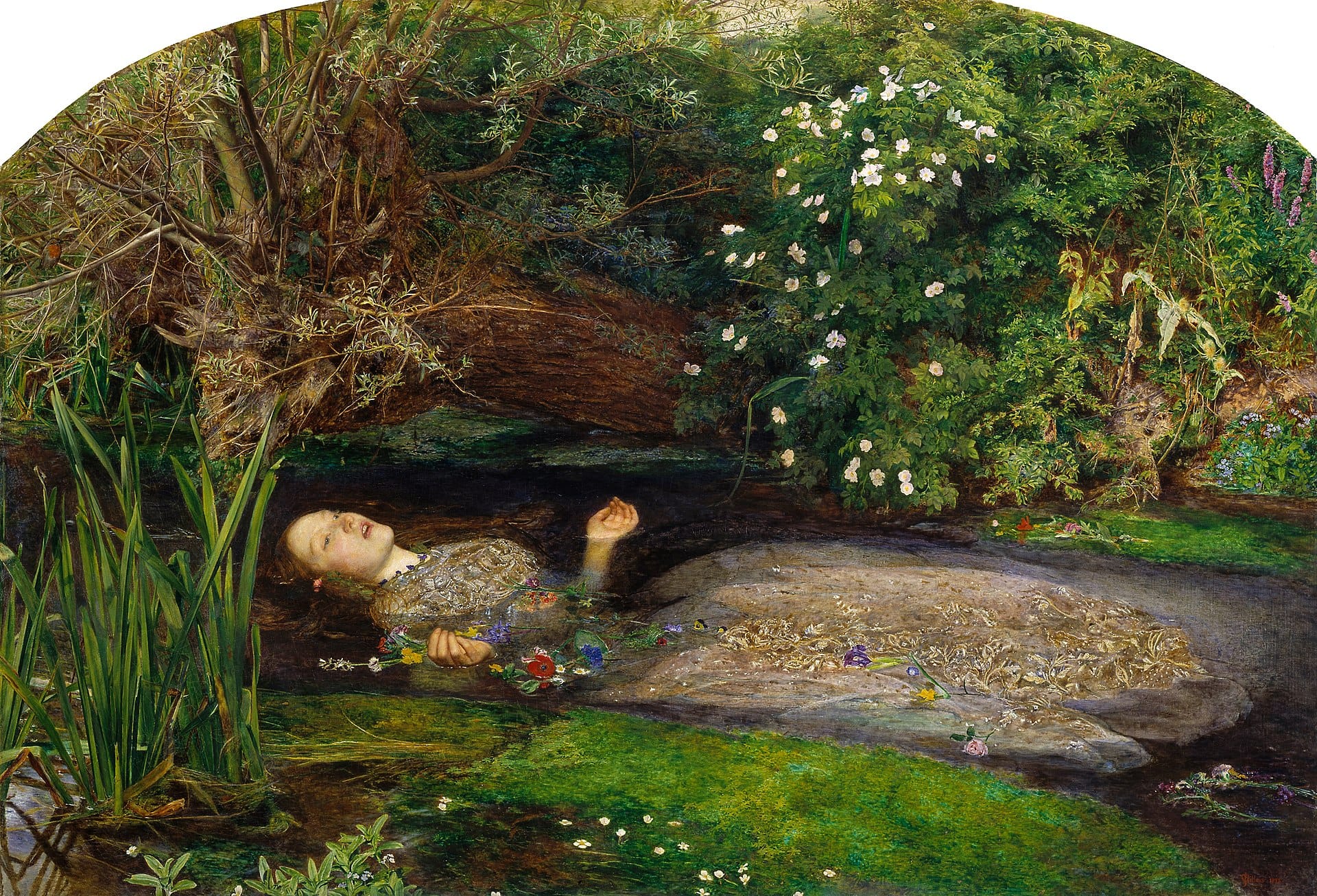
Ophelia's fate appealed to the pre-Raphaelite painters. Shaped like a tombstone, this (above) is John Everett Millais' Ophelia (circa 1851). Below is a close-up - the luminous corpse recalls Robert Browning's My Last Duchess (1842): "That's my last Duchess painted on the wall,/ Looking as if she were alive..." Another painting of Ophelia here.
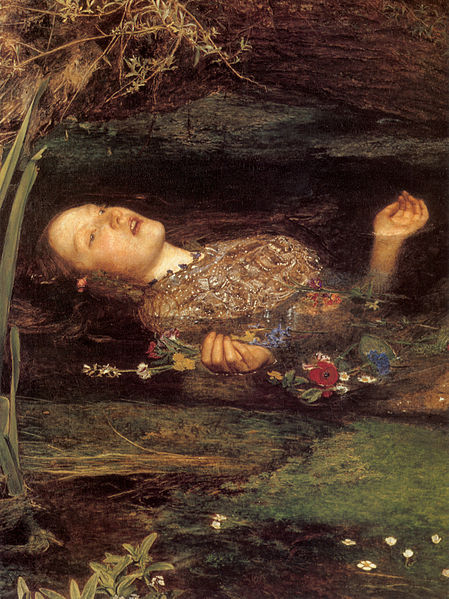
Drowning as a motif affected a number of Victorians. Shelley himself drowned in 1822, in a boating accident. Elizabeth Barrett Browning lost her beloved brother Edward the same way in 1840 off Babbacombe Bay and partly blamed herself.
It was in the popular imagination that Ophelia was best known - after all, everyone knew young women who went crazy or fell into prostitution after being seduced and abandoned, and who threw themselves off Waterloo Bridge. Although there were famous examples of this, such as Mary Furley in 1844, which angered and inspired many poets and writers, the legend far outran reality. Some of the favorite "falling women" of the era included Sappho and The Lady of Shalott. In Dickens' novels, drowning is a popular motif, although it is all men who drown and fallen women who think about it.
"To be, or not to be?"-- Ere I decide,
I should be glad to know that which is being…
For me, I sometimes think that Life is Death,
Rather than Life a mere affair of breath.
- Byron, Don Juan, Canto the Ninth
Ophelia became very popular elsewhere in Europe in the 1880's. This is her as a Russian rusalka (a female water spirit):
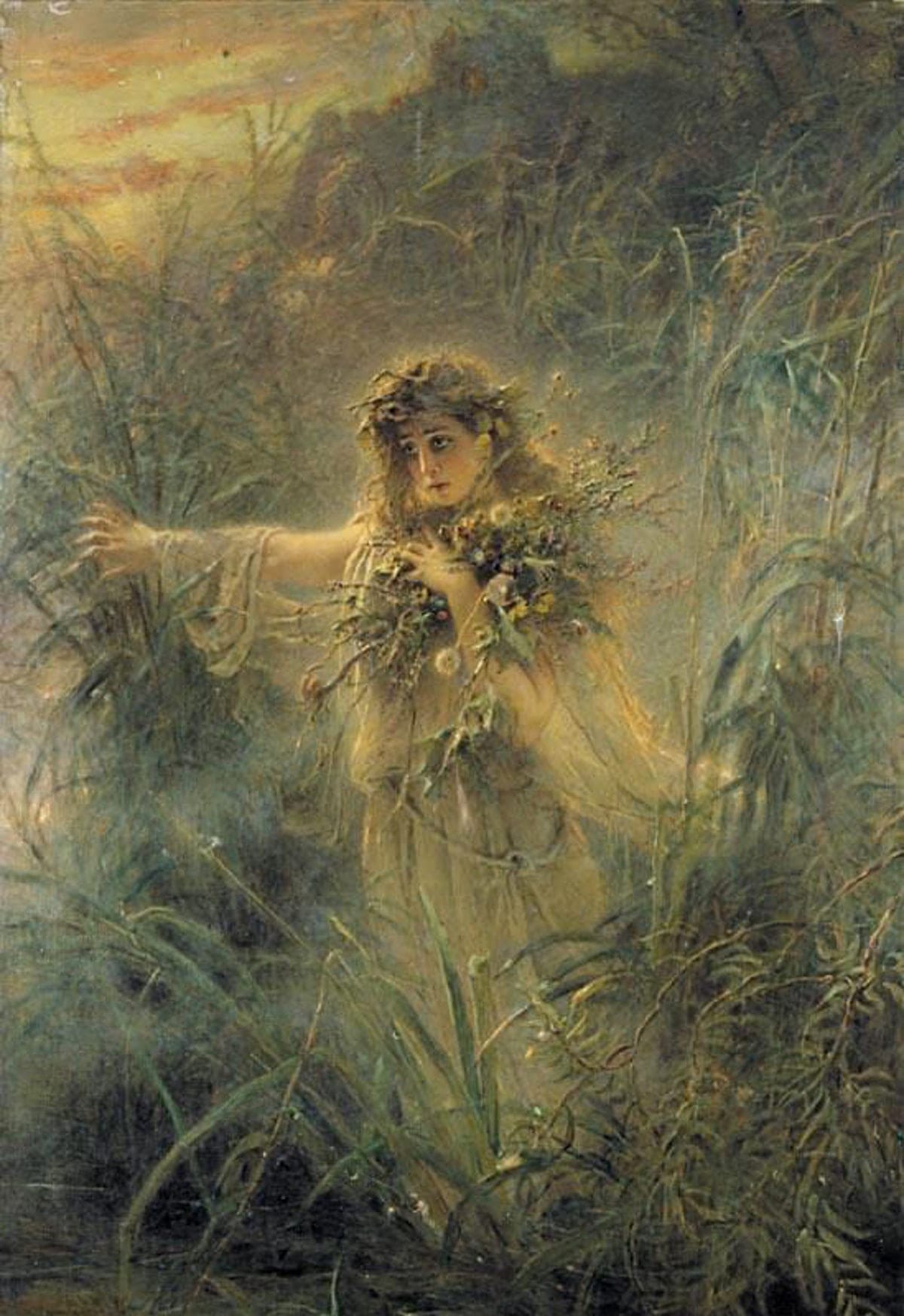
The great French actress Sarah Bernhardt also tackled Ophelia. She was an accomplished sculptor and around the time of a visit to Denmark in 1880, she completed the marble sculpture of Ophelia shown below, which was first exhibited during her American tour in 1881-82. She remained morbidly fascinated by death throughout her life, preferring tragic roles like La Dame aux Camélias, Tosca, Joan of Arc, Cleopatra, Ophelia - and Hamlet no less! She usually died in the final act.
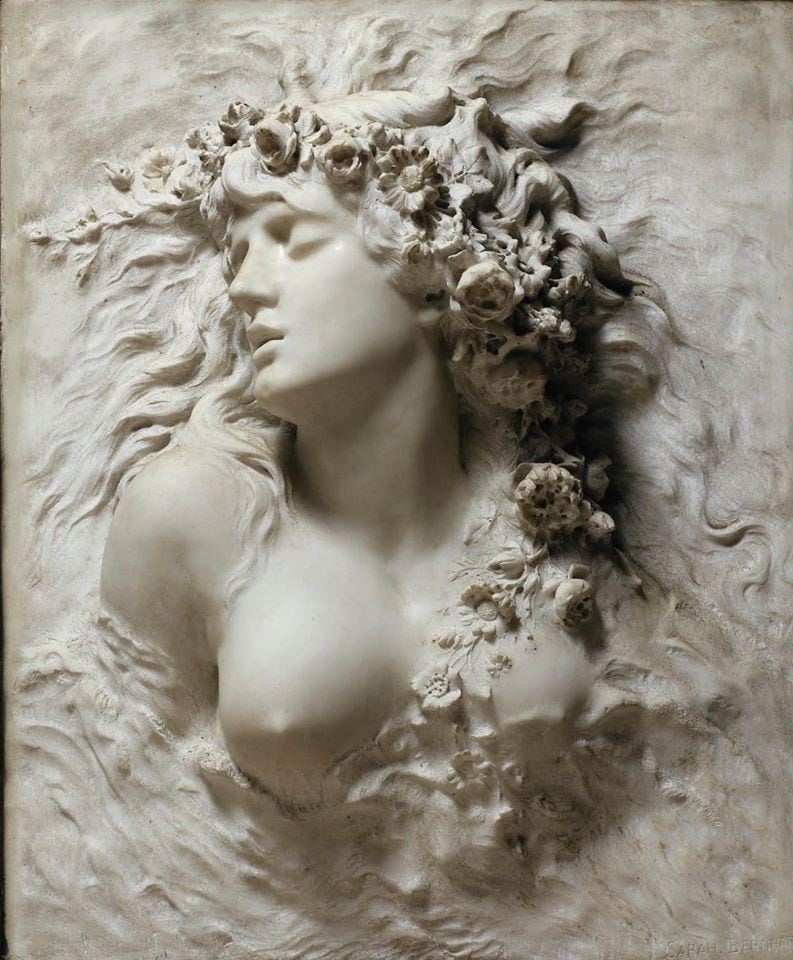
With Ophelia in the news in the late 1880's, this woman shown below, L'Inconnue de la Seine, who apparently drowned herself in the Seine at that time, became associated with Ophelia. No one ever identified her but she appears to be younger than 20. This photo of her death mask (a plaster cast made after her death) so affected people emotionally - perhaps because of its Mona Lisa-like quality, said Camus - that writers and artists have remained fascinated with her for more than a century - Nabokov and Rilke among them. Was this really a death mask from a dead woman or was she still living and this was a stunt? We don't know.
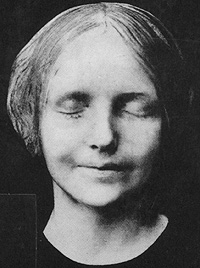
Then there's this...
In Burlington long ago
And later again in Ashtabula
I said to myself:
I wonder how far Ophelia went with Hamlet.
What else was there Shakespeare never told?
That must have been something.
If I go bugs I want to do it like Ophelia.
There was class to the way she went out of her head.
- Carl Sandburg
This painting by Friedrich Heyser around 1900 apparently appealed to Taylor Swift in 2025 - a shot from her music video The Death of Ophelia:
